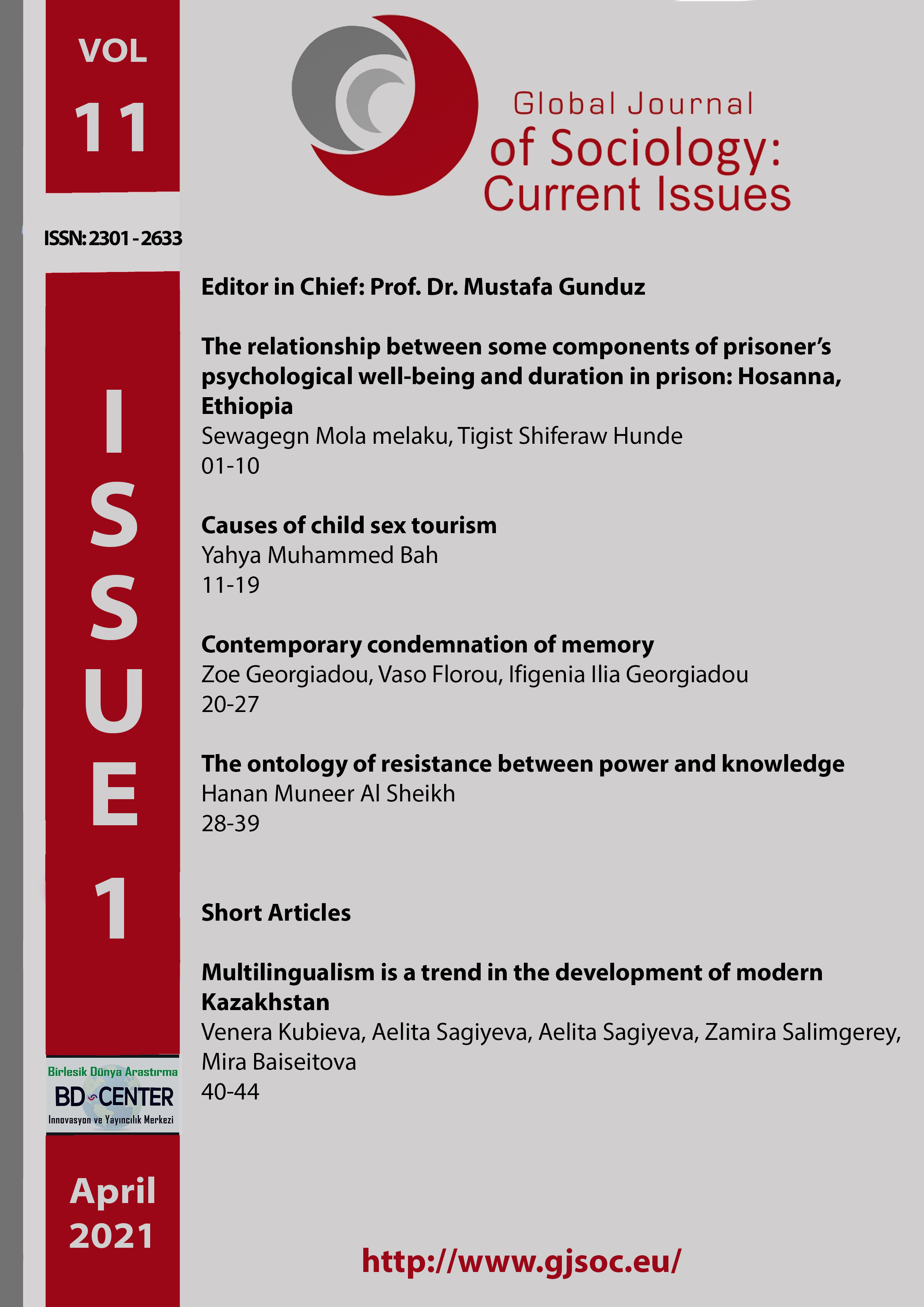Causes of child sex tourism
Main Article Content
Abstract
Background: The tourism industry beyond all reasonable doubt is not only one of the most rapidly growing industries in the globe but one of the largest employers generating an annual revenue of billions of dollars. However, in spite of that, the industry according to nascent studies has some profound negative socio-economic, political, cultural and environmental impacts on communities. For instance, the act of involving children in sexual activities by tourists has affected the children physically, mentally, emotionally, economically, socially and psychologically. Some have even died. Even though the precise number of victims of child sex tourism casualties and their circumstances is not scientifically well researched and documented, it is an indisputable fact that they are in millions. This lack of scholarly documentation, beyond reasoning has posed a great challenge to all concerned authorities. Thus, this research aims at addressing this gap. Purpose: The fundamental rationale for a systematic literature review is to examine the present scale and degree of the causes of child sex tourism, share knowledge to spark and inspire processes that will usher in rapid growth from all directions in the fight against the menace.
Methodology: A systematic review of the literature using information collected from different sources was actuated. Google Search Engine was used to search these articles. During the search, numerous combinations of words and phrases were used to ensure that articles reflect the most recent knowledge and scholarly works.
In essence, only peer-reviewed articles published after 2008 were selected except extract perceived to be of fundamental mileage to the study. However, articles published by dedicated international organizations working for the protection of children for years and have produced indefatigable knowledge in commercial sexual exploitation of the children were stealthily appraised. Results: Poverty, which is commonly cited, is not the sole justification for the commercial sexual exploitation of children, even though it contributes to an environment that may be a sequel to such exploitation. In sum, a range of other complex contributing factors includes consumerism, culture, economic disparities, social, political instability, environment, corruption, lack of reporting crimes, lack of and/or inadequate laws, poor enforcement, lack of interest, debt burden, structural adjustment programmes, practice of projecting women as subservient to men, discriminatory policies, poverty, natural calamities, lack of training, demand and supply, power imbalances, sex trade, family encouragement, philanthropic organizations, Internet access, crime and violence, transient workers, freedom of movement, domestic tourists, population expansion, child trafficking, individual, loss of communal farmlands; and porous borders. Conclusion: In conclusion, the causes of child sex tourism can be simply pooled and catalogued into social, economic, political, natural, technological, individual and legal causes.
Â
Keywords: Child, child sex tourism, perpetrators, survivors, tourist, tourism.
Downloads
Article Details

This work is licensed under a Creative Commons Attribution 4.0 International License.
Authors who publish with this journal agree to the following terms:- Authors retain copyright and grant the journal right of first publication with the work simultaneously licensed under a Creative Commons Attribution License that allows others to share the work with an acknowledgement of the work's authorship and initial publication in this journal.
- Authors are able to enter into separate, additional contractual arrangements for the non-exclusive distribution of the journal's published version of the work (e.g., post it to an institutional repository or publish it in a book), with an acknowledgement of its initial publication in this journal.
- Authors are permitted and encouraged to post their work online (e.g., in institutional repositories or on their website) prior to and during the submission process, as it can lead to productive exchanges, as well as earlier and greater citation of published work (See The Effect of Open Access).
